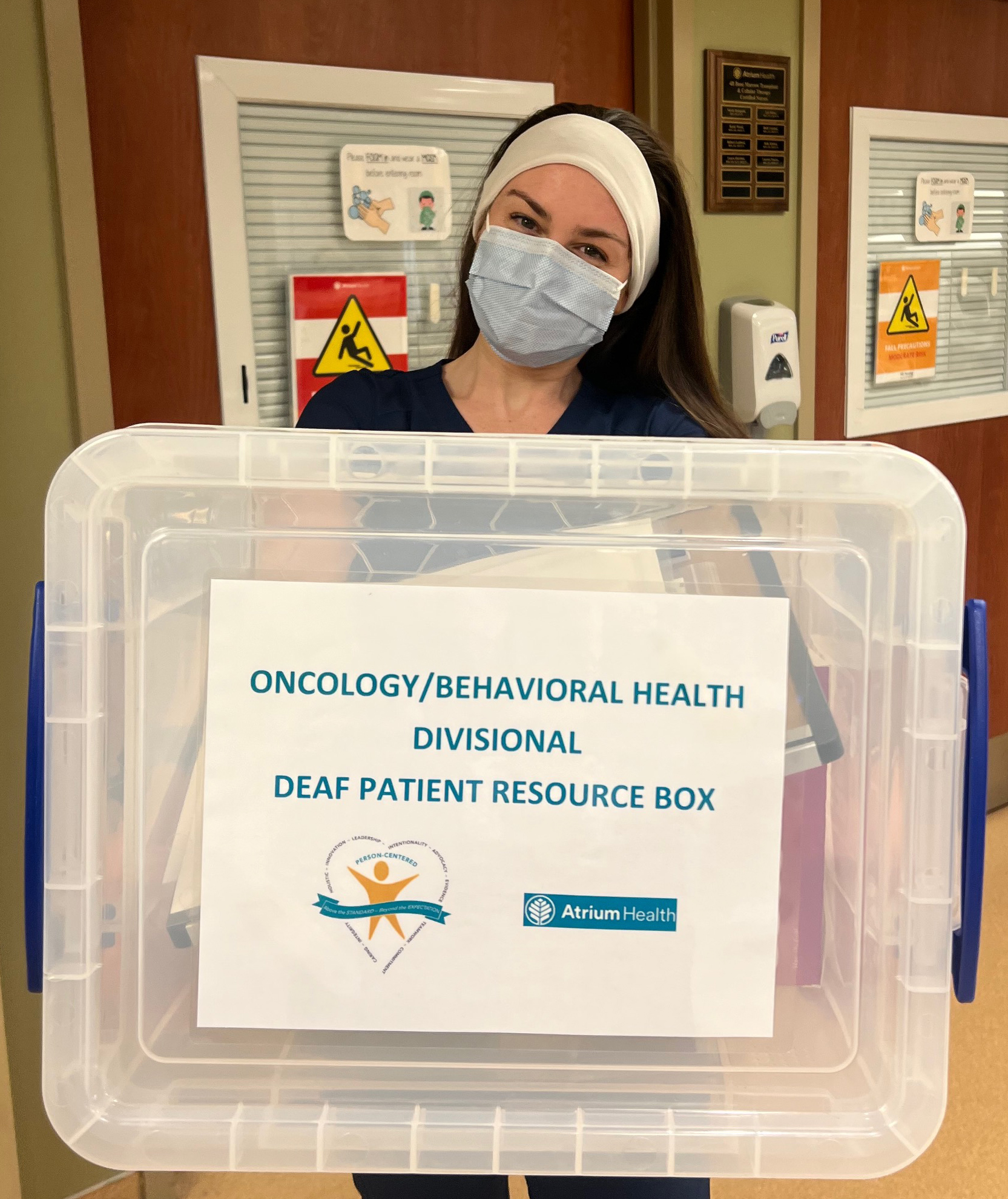By Addi Georgantzis, MSN, RN, AGPCNP-BC, OCN®, BMTCN®, and Hailey Brotze, BSN, RN
Many patients with cancer confront complex health disparities, but those with disabilities must muddle through more barriers than those without. As nurses, we have a responsibility to help our patients obtain the best possible care and support them during treatments such as a bone marrow transplantation.

Allogeneic transplant recipients can be hospitalized for up to a month or longer. All patients who undergo bone marrow transplant face many challenges, including increased risk for infection, bleeding, and graft-versus-host disease. Patients need clear communication for safety and optimal outcomes.
But what happens if your patient can’t communicate their concerns by intercom through the call bell? Do they understand how you will help meet their needs when they can’t hear your response?
Many nursing units lack the resources needed to communicate with patients who are deaf or hard of hearing. In response to a survey from the Royal National Institute for Deaf People, 42% of those who were hard of hearing said they experienced challenges when communicating with their healthcare providers. Patients rely on their nurses for empathy, compassion, and understanding, and nurses must find innovative ways to liaise between providers and care teams.
When the blood or marrow transplant unit at Atrium Health in Charlotte, NC, recognized the need for elevated support for patients with hearing disabilities, Hailey Brotze, BSN, RN, led a project team initiative to create an oncology divisional resource box for patients who are deaf or hard of hearing. Brotze built a kit with critical resources, such as:
- Door signs to identify patients who are deaf or hard of hearing
- Flashing doorbells to alert patients when providers are entering
- Transparent masks to allow for lip reading
- Whiteboards for clear communication
Brotze also implemented a checklist for interprofessional team members to use when interacting with patients who are deaf or hard of hearing. To better communicate and care for patients with hearing challenges, nurses and other healthcare professionals can coordinate with dietary services to order meals in person, educate staff on frequent rounding to attend to IV pumps promptly, and encourage using nonverbal communication skills, which helps patients practice autonomy and fully participate in their cancer care.
Inspired by her patient with hearing loss, Brotze sought feedback from those affected, and was able to complete the project with a positive impact on her patient’s experience during her transplant stay. "I was so excited to tackle this project, as I minored in disabilities in society in college, and I greatly value inclusivity in healthcare for those with disabilities," Brotze said. We can thank our patients who inspire us and highlight issues such as units lacking specific accommodations.
Currently, there is no oncology patient-specific care model when caring for patients who are deaf or hard of hearing. Therefore, nurses should raise awareness about the lack of communication tools and encourage leadership to assist with establishing resources. As a nurse, you are responsible for all aspects of care. Patients rely on their nurse to help them when they are at their most vulnerable.






